Mostly Mute Monday: Dark Matter’s Secrets Revealed By Colliding Galaxy Clusters
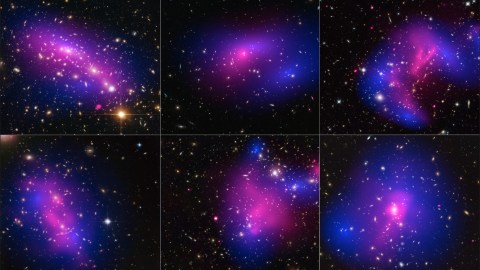
When two of the largest cosmic structures crash together, the effects show up everywhere. Everywhere, that is, but the dark matter.
“It may be that ultimately the search for dark matter will turn out to be the most expensive and largest null result experiment since the Michelson-Morley experiment, which failed to detect the ether.” –John Moffat
In the 1930s, we noticed individual galaxies within clusters moved too quickly to be explained by their starlight’s gravity.
In the 1970s, we noticed that galaxies rotated inconsistently with stars and gas accounting for all their mass.
And in 2005, we noticed this.
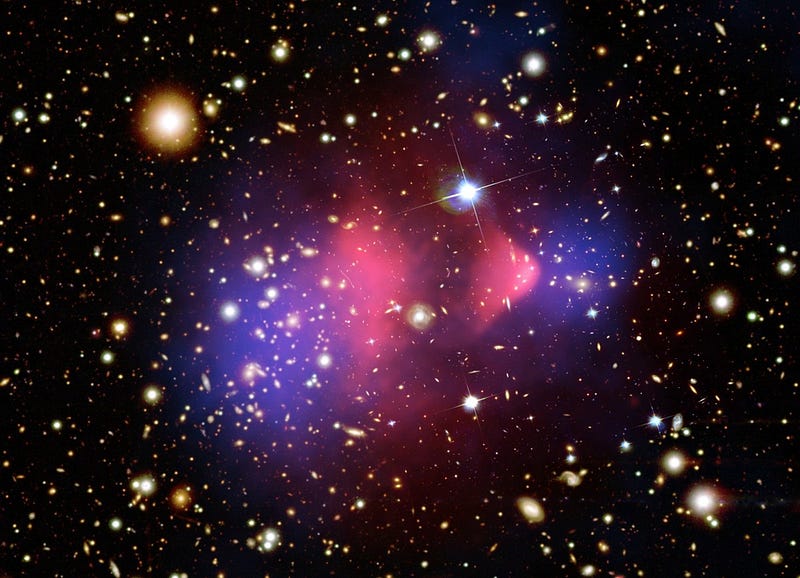
Lensing Map: NASA/STScI; ESO WFI; Magellan/U.Arizona/D.Clowe et al.;
Optical: NASA/STScI; Magellan/U.Arizona/D.Clowe et al., of the Bullet Cluster.
When two galaxy clusters collide, the individual galaxies pass right through one another, like two rounds of bird shot fired from afar at one another.
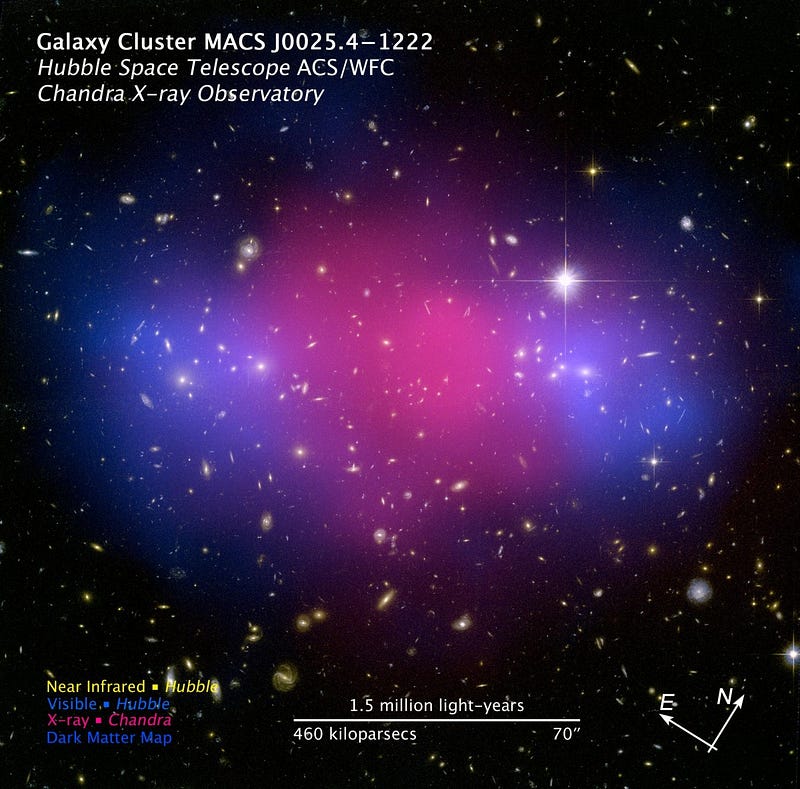
The non-luminous gas should heat up, emitting X-rays (shown in pink).

But dark matter, reconstructed from gravitational lensing data (in blue), ought to pass through unimpeded, without collisions or self-interactions.
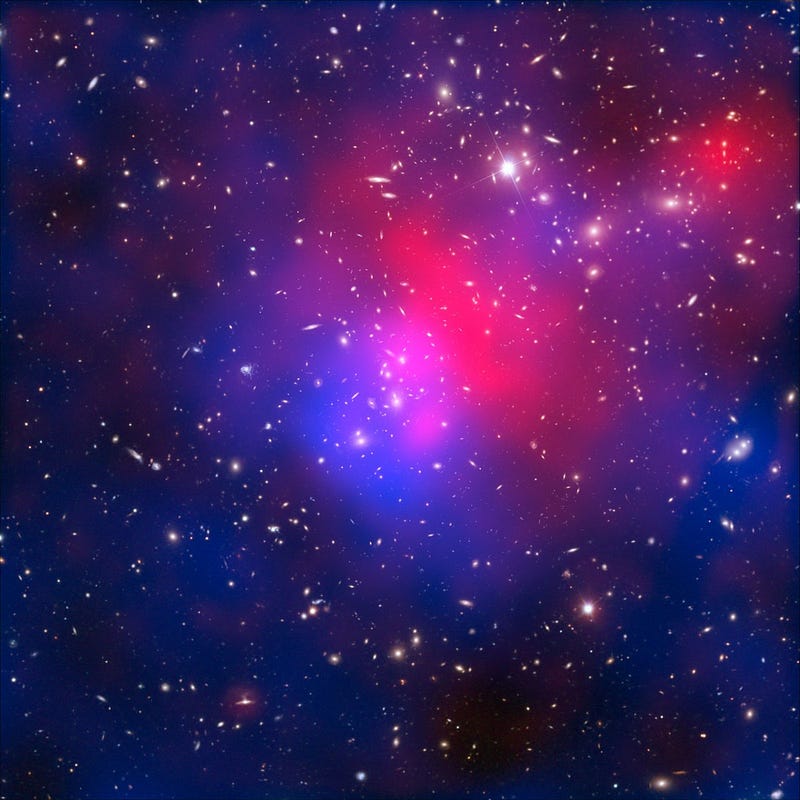
Dark matter’s separation from normal matter indicates that the matter we’re used to — protons, neutrons & electrons — is not responsible for most of the mass of the Universe!
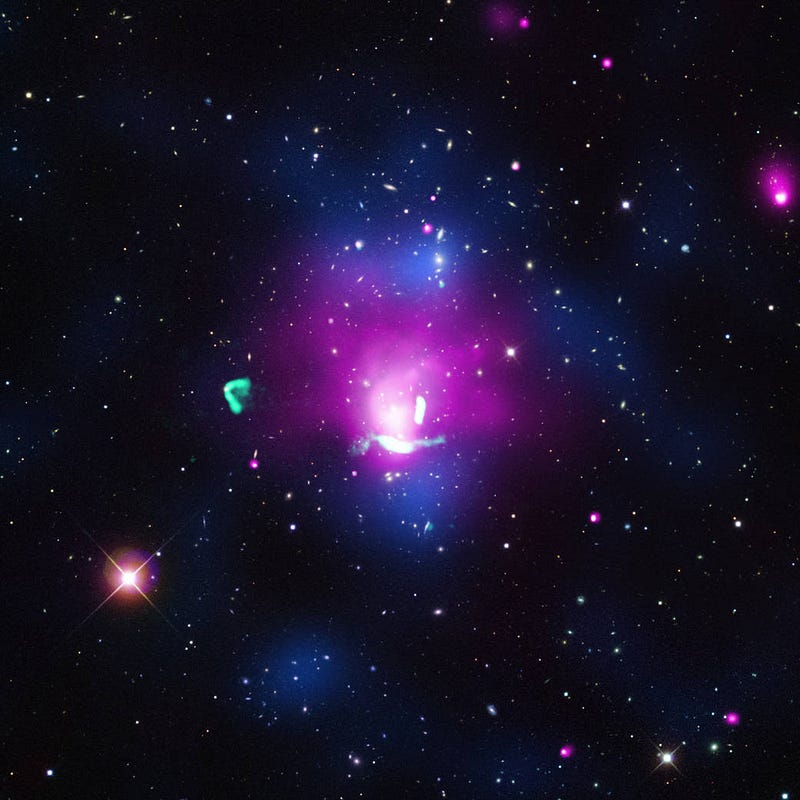
Instead, every colliding group of galaxies we observe shows this separation of total mass from the light-emitting gas.
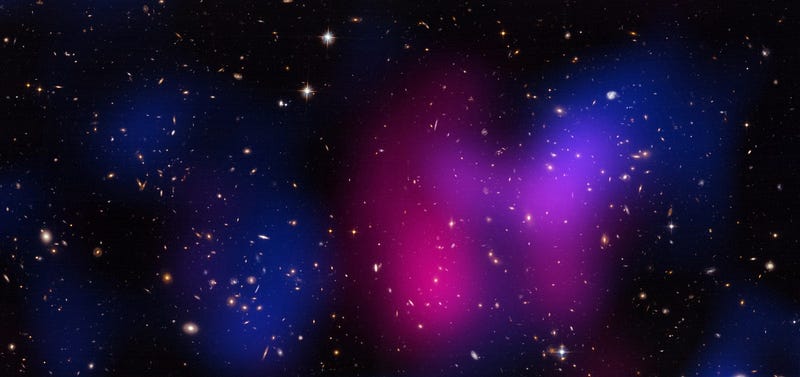
This is true for the smallest groups, like the Bullet Group, SL2S J08544–0121,
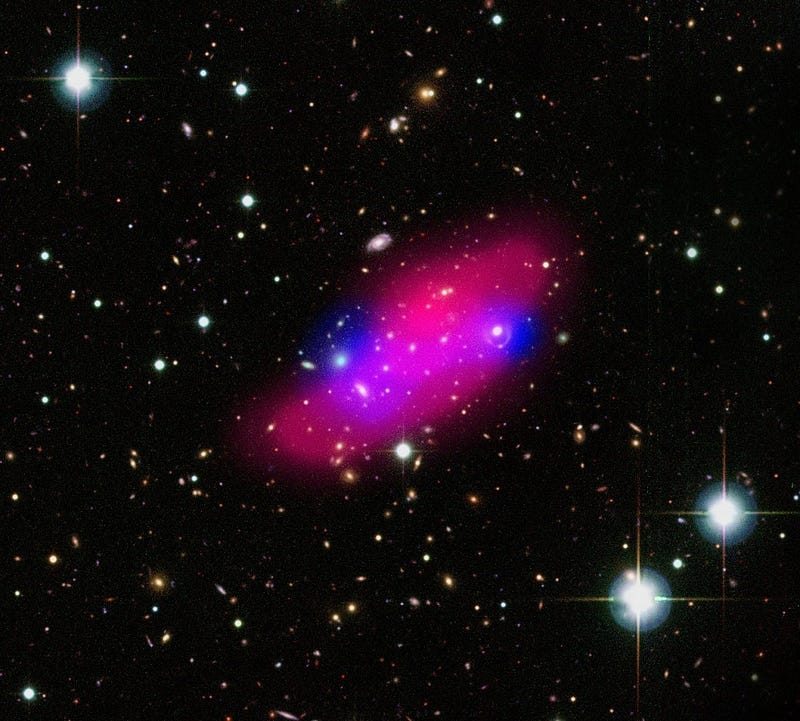
to the largest colliding cluster known, El Gordo, ACT-CL J0102–4915.
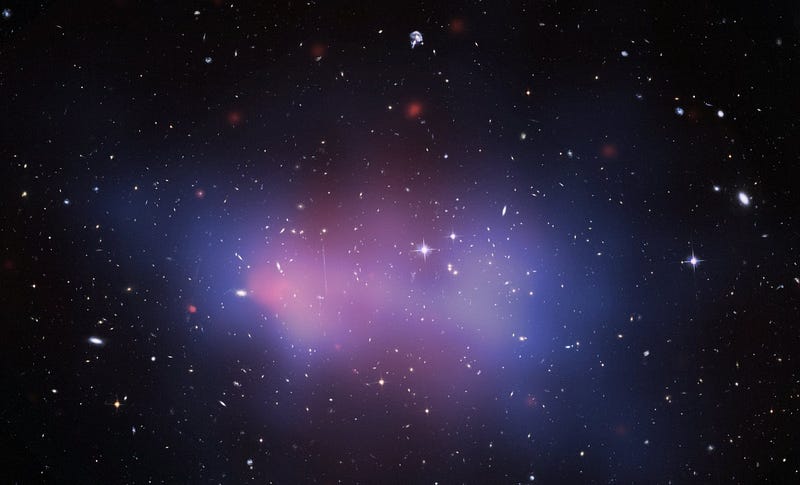
Each has its own unique history, but all show the same thing: dark matter is real, it’s everywhere, and it’s mysteriously spectacular.
Mostly Mute Monday tells the story of a single astronomical phenomenon or object in visuals, images, video and no more than 200 words.
Leave your comments on our forum, help Starts With A Bang! deliver more rewards on Patreon, and pre-order our first book, Beyond The Galaxy, today!





